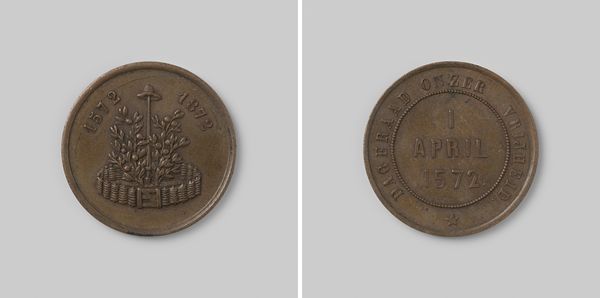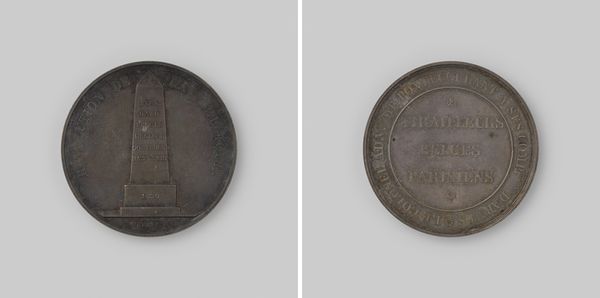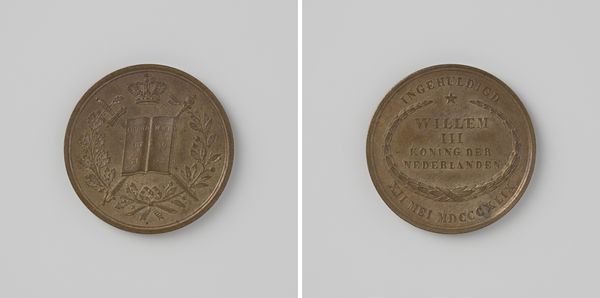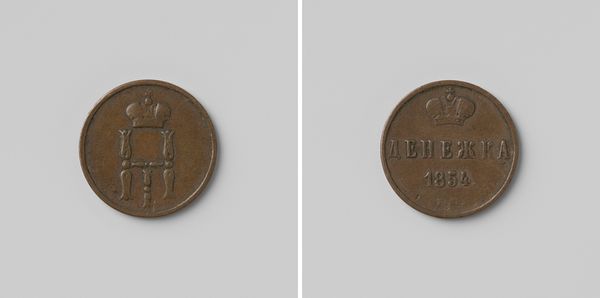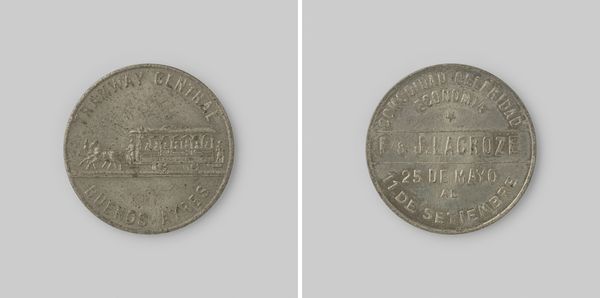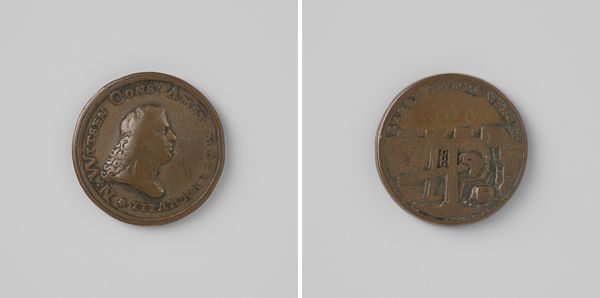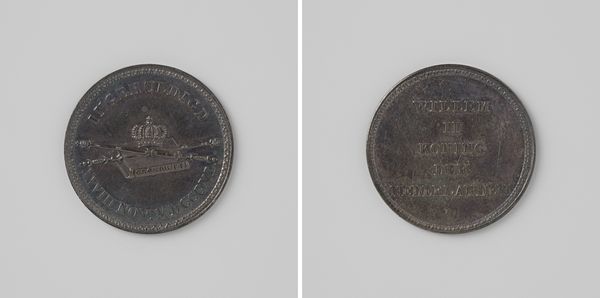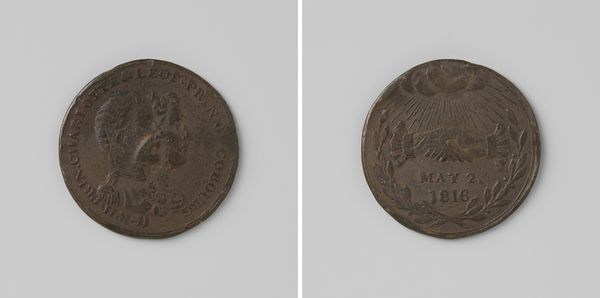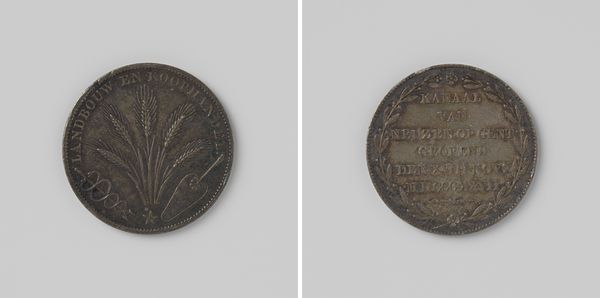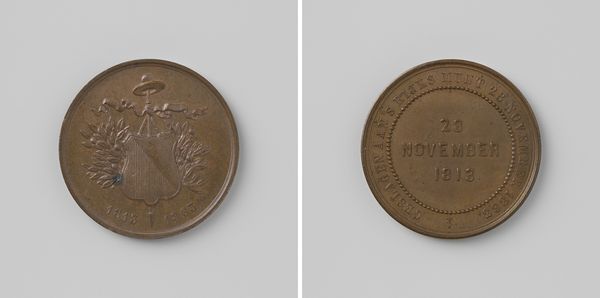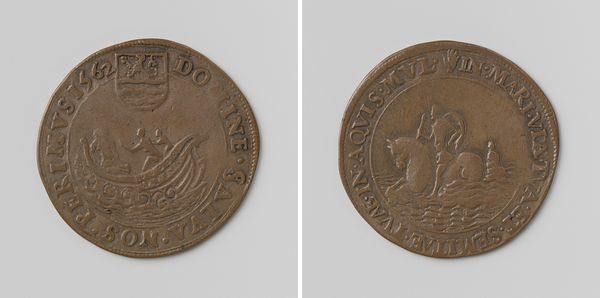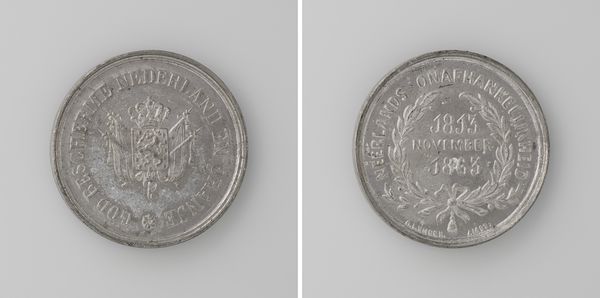
print, bronze, sculpture
# print
#
bronze
#
sculpture
#
history-painting
Dimensions: diameter 2.5 cm, weight 6.77 gr
Copyright: Rijks Museum: Open Domain
Editor: Here we have "Derde eeuwfeest van de inname van Den Briel," a bronze print sculpture created in 1872. It looks like a commemorative coin, and I am struck by how meticulously detailed such a small object is. How do you interpret this work purely from a visual perspective? Curator: Initially, I see the deliberate symmetry dominating the piece, lending it an air of formality. Note how the text is organized and how the two sides of the coin relate to each other. Could you describe the interplay between the iconography on the obverse and the text on the reverse? Editor: Well, on one side there's the text and a clear date, while on the other we see what looks like plants and perhaps a sword? Curator: Precisely. The plant life erupting from what appears to be a basket is contrasted with the rigid textual arrangement, with each element carefully positioned within the circular boundary. Consider how the textures interact - the smoothness of the field versus the minute details of the embossed imagery. What emotional quality might arise from these stark contrasts? Editor: I hadn’t thought about it that way! I see a dynamic tension; the detailed textures make me think about craftsmanship, but it also feels…contained? Curator: Indeed. Now, observe the lines incised around the perimeter of each face. What purpose might these lines serve in directing our attention, in containing meaning? Editor: It really guides my eyes around, making sure I take it all in! Almost framing each side, one after the other. Curator: The frame emphasizes the work's completeness. I would say that examining such intricacies highlights the symbolic depth inherent within seemingly simple objects. Editor: It's amazing to realize how much the visual language of something so small can convey. Curator: Yes. Close formal analysis really illuminates how the visual elements alone create a system of meaning and directs us toward interpreting even commonplace objects through a theoretical framework.
Comments
No comments
Be the first to comment and join the conversation on the ultimate creative platform.
